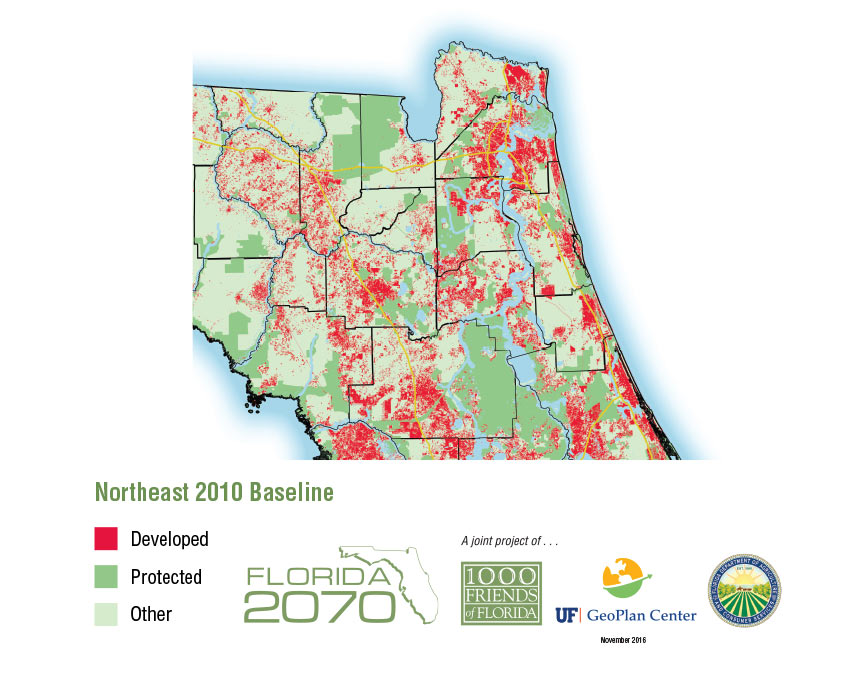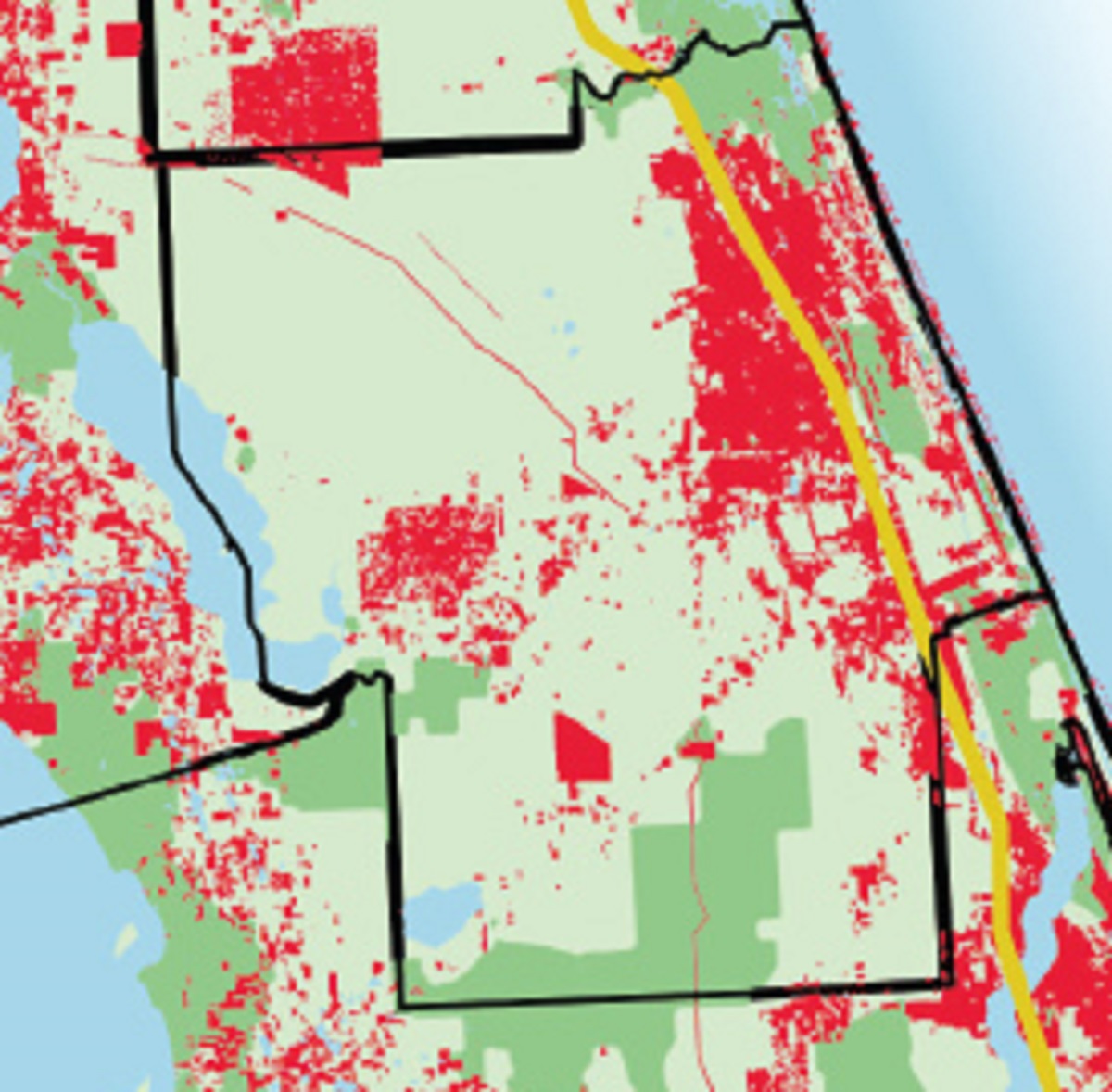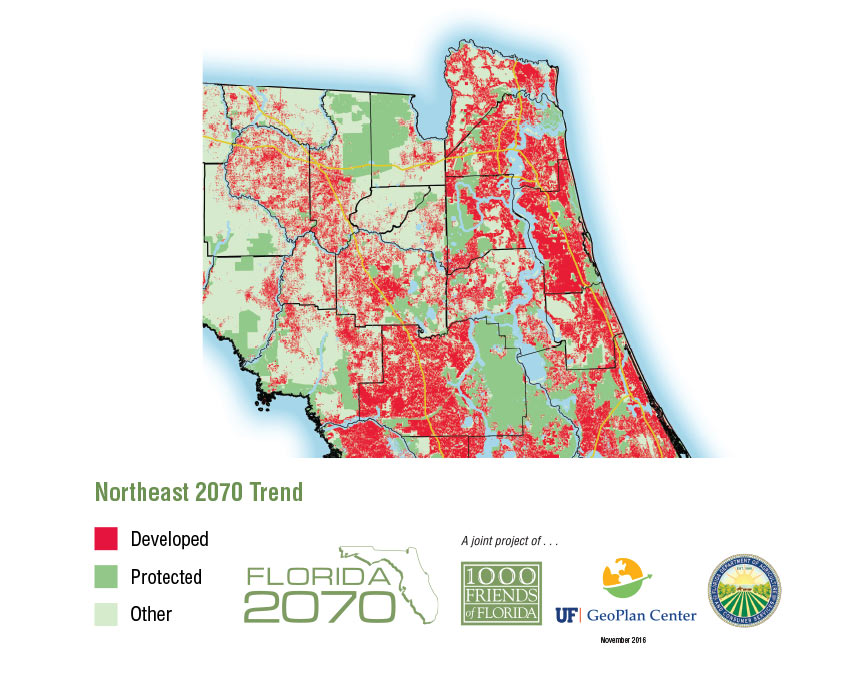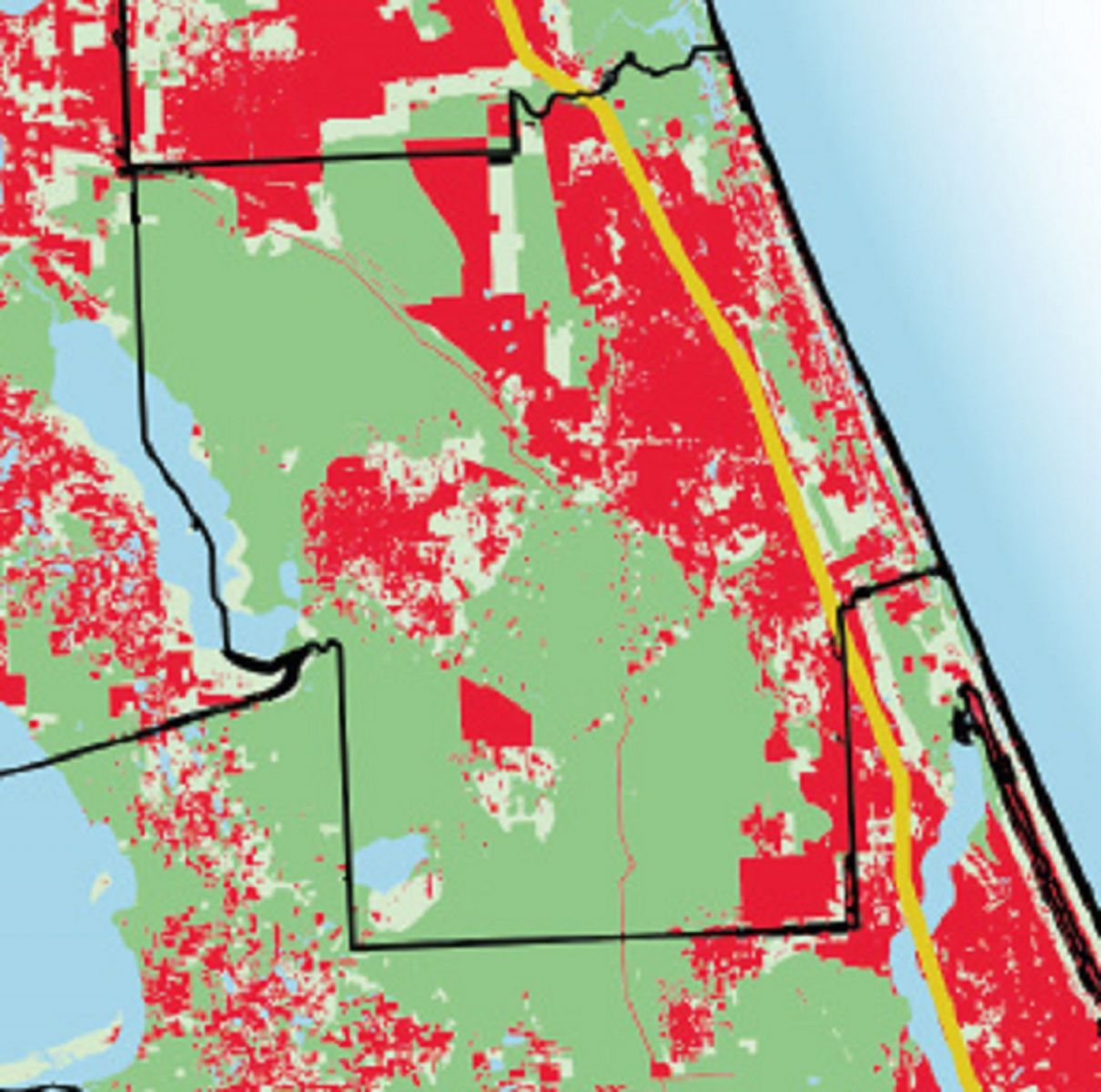A Conservationist Argument for Density
Conservation and density are more like sugar and cream than they are like oil and water.
PALM COAST, FL – February 10, 2020 – 1000 Friends of Florida is far from a bastion of developer advocacy. Its list of priorities echoes the sentiments so loudly proclaimed by citizen groups protesting many of the development projects proposed recently in Palm Coast and Flagler County; at public meetings, in letters to the editor, in social media, and in cocktail party debates. They include:
- Conserving land
- Protecting our water
- Building better communities
- Supporting resilience
- Promoting better transportation
- Managing growth
So it may come as a shock to those who oppose any form of affordable housing, multi-family construction (even market rate), smaller lot sizes, smaller homes, single-car garages, dollar format stores, or any additional development in The Hammock, that 1000 Friends of Florida is a very strong proponent of increasing development density.
“Florida 2070/Water 2070 – What is Your Vision for Florida’s Future?” makes a strong argument for increasing density to better accommodate the 33.7 million residents projected to have made Florida their home by 2070. The report compares a baseline 2010 view with two alternate scenarios. The first scenario projects growth through 2070 following today’s model of low-density sprawl, memorialized in ITT/Levitt's master plan for Palm Coast.
Read: Has ITT’s Master Plan for Palm Coast Run Its Course?
The second scenario projects the same population growth but with planned density increased by only 20%. The differences are represented by contrasting heat maps depicting developed areas in red and with agriculture and preservation areas in green. The differences are stark. “The most important finding from Florida 2070 is that even modest increases in development densities can result in a substantial saving of land” and water.
NORTHEAST FLORIDA 2010 BASELINE

FLAGLER COUNTY 2010 BASELINE

NORTHEAST FLORIDA 2070 TREND

FLAGLER COUNTY 2070 TREND

NORTHEAST FLORIDA 2070 ALTERNATIVE

FLAGLER COUNTY 2070 ALTERNATIVE

While Florida’s expected 2010 – 2070 population growth rate is predicted to be 79%, the growth rate of northeast Florida and central Florida are expected to be 92% and 85% respectively. That puts Flagler County in the crosshairs of the state’s future developmental impact.
The report concludes, “Roughly a third more of NORTHEAST FLORIDA lands develop under either 2070 scenario. This is due mostly to current sprawling development patterns coupled with almost a two-fold increase in population in the region. However, conservation lands would double under the Alternative scenario. Compared to 2010, overall water demand increases by 88% in the Trend and 48% in the Alternative. In the Alternative scenario, agricultural water demand increases by 25% because irrigated agricultural lands do not develop. Development-related water demand increases by 120% in the Trend and by 57% in the Alternative."
Commentary
How do the report's “Build Better Communities” recommendations apply to Palm Coast and Flagler County?
“Support Infill and redevelopment in a manner that is sensitive to existing communities.” – Palm Coast’s roughly 14,000 undeveloped lots have already been platted, but this does not preclude adopting new land development code language and impact and permitting fee schedules that encourage smaller homes (less than the current 1,200 SF) and optional one-car garages. Additionally, “grannie flats” could be encouraged. Allowable multi-family density and height restrictions should be raised. Palm Coast's current multi-family density limit is 12 units per acre. Raising the limit to 15 units per acre would meet the report's recommendation for a 20% increase while staying well below the higher multi-family densities allowed in Daytona, Ormond, and Jacksonville.
Read: Why Doesn’t Palm Coast Have a Costco?
“When new areas are developed, give priority to those areas near existing communities and infrastructure.” – Rather than sprawling westward, development should be clustered near existing transportation corridors where service infrastructure already exists (or where it can be more efficiently expanded), and near shopping and recreational facilities. Examples: Town Center, U.S. Route 1, Palm Coast Pkwy, Belle Terre, Matanzas Woods Pkwy, Seminole Woods Blvd, Colbert Lane, SR 100, Old Kings Road, Route A1A, and John Anderson.
“Promote a mixture of homes, shops, schools, and offices within close proximity.” – Take the Town Center concept forward. An example is the maligned Gardens development proposed on John Anderson where residents could easily walk or bike to work at one of the businesses within the included commercial district.
Dense, mixed-use developments actually reduce the effect of growth on the transportation system by reducing the number of generated trips. Palm Coast has a “Walkability Score” of 7 where nearly all errands require a car (WalkScore.com). Only one resident in 10 can reach a bar, restaurant, or coffee shop within a 5-minute walk from home. Only two Florida cities rank lower.
Flagler County and Palm Coast boast over 100 miles of well-maintained walking and biking trails, but one must drive to get to them. Journeys are limited to out and back rides or walks. There is literally no walking or biking from point A to point B, such as to and from work, recreation, or shopping.
“Include a range of housing choices to ensure affordability.” – Town Center is hosting the first new multi-family construction in over four years in the entire county. This workforce housing, totaling 321 units, should be finished during 2020. More market-rate multi-family is being planned or proposed in Town Center and in Matanzas Woods. However, greater flexibility to allow grannie flats and townhomes in and near traditional single-family neighborhoods will provide a better match to the changing tastes and financial needs of new residents. Micro apartments and co-living should be encouraged.
Read: Commentary: Confronting The Illusion of Affordable Housing
“Design communities for multiple transportation options, including walking, biking, and public transportation.” – Palm Coast’s cul-de-sac neighborhoods with swales and lacking sidewalks do not lend themselves to traditional public transportation options. Hopefully, the introduction of autonomous vehicles will create a viable public transportation option.
“Protect significant historic and natural resources within communities.” – Clustering density provides for more conservation of green space, significant trees, and habitat. It reduces the impact of development on Florida’s lands and waters. Density makes the provision of potable water and collection of wastewater more efficient, It also allows more efficient distribution of power, communication, and internet services. Reuse water can be more readily supplied to dense neighborhoods, minimizing the draw on aquifers for irrigation and reducing discharge into existing water bodies.

Thanks for your articles
Your articles are the only media that truly reflects the reality of Palm Coast and Flagler County growth and development. Just wanted you to know that your tireless efforts are regconized.